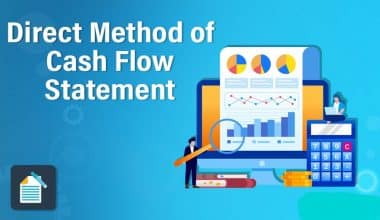When a stock splits, dividends and capital distributions are taken into account, the cost basis, usually the purchase price, is the asset’s initial value for tax purposes. The capital gain, which is equal to the difference between the asset’s cost basis and its market value, is calculated using this value. This phrase can also explain the difference between a commodity’s cash and futures prices.
What Is Cost Basis?
At its most basic level, the cost basis of an investment is the amount of the initial investment plus any commissions or other costs that come with the purchase. Either the amount of money the investment is worth or the price paid per share can be used to describe it.
It’s crucial to use the correct cost basis, also known as the tax basis, especially if you reinvest dividends and capital gains distributions rather than cash them out. When you reinvest distributions, the tax base of your investment goes up. You must take this into account if you want to report a smaller capital gain and pay less tax. You can end up paying taxes twice on the reinvested distributions if you don’t use the higher tax basis. Also, determining the correct cost basis is the first step in determining how much money you made or lost when you sold a stock.
For tax purposes, “cost basis” refers to an item’s original value or purchase price. The cost basis value is used to figure out capital gains or losses, which are the difference between selling and buying prices. The whole cost basis must be figured out to see if an investment is profitable and if there are any tax consequences. Investors must keep an eye on how their investments are doing to see if they have given them the gains they were hoping for.
Read Also: HOW TO FILE BUSINESS TAXES FOR LLC: Where, When & Everything You Need to Know
Investors frequently use the average cost basis method for mutual fund tax reporting. Your assets are kept at a brokerage business that reports using the cost-basis method. A lot of brokerage houses use the average cost basis method by default. Other strategies are also available to investors, such as first in, first out (FIFO), last in, first out (LIFO), high cost, low cost, and others. Once a cost-basis technique has been chosen for a particular mutual fund, it must be used going forward.
Brokerage firms will give investors the annual tax paperwork they need for mutual fund transactions based on their chosen cost-basis method. Even though the idea of cost basis is simple in general, there are many ways it can get complicated. Keeping track of the cost basis is important for taxes and for keeping an eye on and judging the performance of investments. The goal is to maintain accurate records and, when possible, simplify the investment approach.
Cost Basis Types
The organization employs three different cost-basis methodologies.
#1. FIFO Method
The “first in, first out” inventory principle is used in this costing approach to refer to the sale of the initially purchased stock.
Let’s say X bought 10 stocks on January 1 and another 20 on February 2. On March 3, X disposed of 5 stocks. Five stocks will be counted as sold out as of January 1 for recording purposes by the organization. In the case of perishable items, this strategy is typically used.
#2. LIFO Method
Let’s use the aforementioned example to illustrate “last in, first out” accounting, another name for this procedure. Five stocks will be sold out under this approach as of February 2nd.
#3. Weighted Average Cost Approach
This method uses an average cost basis to record the stock’s worth. This approach is typically used in mutual funds. Consider buying 4 units for $10 and 6 units for $20. It will be calculated as [(4$10+(6$20)]
The average cost per unit is $16 when 4 units are added to 6.
Advantages
- For taxation purposes, the cost basis is crucial. For instance, 100 shares were bought for $ 10 each, and the share’s current market value is $ 50. Gains on capital are 100 shares ($50 – $10) = $400.
- For financial reporting, the cost technique is advantageous. Otherwise, it would be challenging to document those variable assets. For instance, if we start documenting the transaction based on market pricing, it would be challenging to maintain books in accordance with such modification because the share market price is unstable and varies every second.
- Which costs should be included in the cost or not is determined by the cost basis. As an illustration, the accounting standard specifies which expense will be accounted for in the asset’s cost.
- Mr. X spends $15,000 on a machine and another $5,000 on installation, brokerage, duty, and other fees. He also pays a few expenses totaling $500 unrelated to the asset.
Disadvantages
- A cost basis does not reflect the asset’s true cost.
- Imagine that X spent $10,000 on an item while Y spent $12,000 on the same asset.
- As we can see, for recording reasons, the price of the same object differs for X and Y.
Cost Basis Calculator
When you sell an investment, your cost basis determines your capital gains tax. The cost basis of a stock or other security is often the amount you paid for each share. Subtracting the sale price from your cost basis will allow you to determine your capital gain (or loss) from a sale. Your cost basis for a security may not always be the same as the price you paid for it. For example, if you inherit stock from a person who has died, your cost basis is usually the price of each share at the time of death. The cost basis can also be changed for stock splits, dividends, costs, and capital distribution returns.
One of the most underutilized ways to save money on taxes is to know how realized gains and losses affect your taxes. When you sell an investment, you need to know the cost basis and keep good records to manage your money now and in the future.
The cost basis calculator automatically figures out the cost basis and the number of shares held for each security. It includes intricate elements, including mergers, spin-offs, voluntarily occurring events, and dividend reinvestments. The calculator contains information about stock dividends and distributions from mutual funds. Keeping track of splits, mergers, spin-offs, and other corporate actions can make it hard and time-consuming to figure out the cost basis of your stock and time-consuming tasks. The cost of the shares plus the commission your broker charges are added to determine the cost basis for a stock you have purchased.
Read Also: ACTIVITY BASED COSTING: Meaning, Calculation, Steps & Benefits
Cost Basis Real Estate
Simply put, the cost basis of real estate is the price paid at purchase. Knowing this number is crucial because when homeowners sell their primary residence or an investment property, they must pay capital gains tax on any profits beyond the price they paid for the properties.
Your tax obligations may be significantly affected by real estate on a cost basis. If you know your cost basis before buying real estate, you might be ready for any tax consequences of selling it.
The cost basis in real estate is the total of what it costs to buy and take care of a piece of property. For tax purposes, it’s important to know how much you originally paid for your home. If you sell your home for more than you paid, you’ll have to pay capital gains taxes on the difference. The cost basis is like a starting point for the person who owns the property. They are responsible for paying the additional taxes if they sell the property for more than the cost basis.
How Do You Calculate Cost Basis?
There are two methods to calculate your cost basis per share:
- To get the new per-share cost basis ($10,000/2,000=$5.00), divide the initial investment value ($10,000) by the new number of shares you own (2,000 shares).
- Divide your prior cost basis per share ($10) by the 2:1 split factor to get $5.00.
How Does the IRS Know Your Cost Basis?
Most of the time, this information is on the confirmation statement that the broker gives you after you buy a security. As a taxpayer, it is your job to give the IRS accurate information about the cost basis.
Why Is Cost Basis Important?
It is important because the difference between the selling and buying prices represents capital gains or losses determined using the cost basis value. The total cost basis must be calculated to determine whether an investment is profitable and to identify any potential tax consequences.
What Is the Best Method for Cost Basis?
Your unique financial needs and situation will determine which cost-basis method is best for you. Using the average cost technique for mutual fund sales and the FIFO method for your other investments is usually appropriate if you have small holdings and don’t want to keep meticulous records of when you bought and sold shares.
Do You Pay Taxes on a Cost Basis?
Investors must pay taxes on capital gains depending on the purchase price and the cost basis when they sell an investment. Nevertheless, whether dividends were reinvested or paid out in cash, they were taxed as income in the year they were received by the investor.
How Do I Avoid Paying Taxes When I Sell Stock?
Here is how to avoid paying taxes on stock:
- Long-term investing
- Increase your retirement account contributions.
- Select the Cost Basis.
- Reduce Your Tax Rate.
- Gather Losses to Balance Gains.
- Relocate to a State with Low Taxes.
- Donate stock to a good cause.
- Put money into an opportunity zone.
How Does the IRS Know if You Have Capital Gains?
Real estate owners must disclose their capital gains to the Internal Revenue Service. In some circumstances, you may receive IRS Form 1099-S if you sell real estate for a capital gain. Real estate settlement agents, brokers, or lenders in real estate transactions send this form to property sellers.
Conclusion
When managing a portfolio and filing taxes, investors must figure out and keep track of the equity cost basis. Most of the time, it is harder to figure out the equity cost basis than to add the purchase price and any other costs.
It is essential to keep an eye on company activity to ensure that investors understand how a stock position can make or lose money and that capital gains and losses are reported correctly. Even though brokerage firms often track and submit this information to the IRS, there are times when they are unable to, such as when a stock is given as a gift. Numerous other web tools, in addition to brokerage houses, can help you keep an accurate record.
Although cost basis is a fairly simple notion, it can get confusing. For tax purposes and to keep track of and evaluate the performance of investments, you need to keep track of the cost basis. It’s crucial to maintain accurate records and, when possible, simplify your investment approach.
Related Articles
- HOW TO REDUCE TAXABLE INCOME: Best Simple Strategies!
- CASH ACCOUNTING: Meaning, Examples, Merits, and Demerit
- TAXABLE BROKERAGE ACCOUNT: Understanding Taxable Brokerage Account And How It Works
- What Tax Does Every American Have to Pay?






